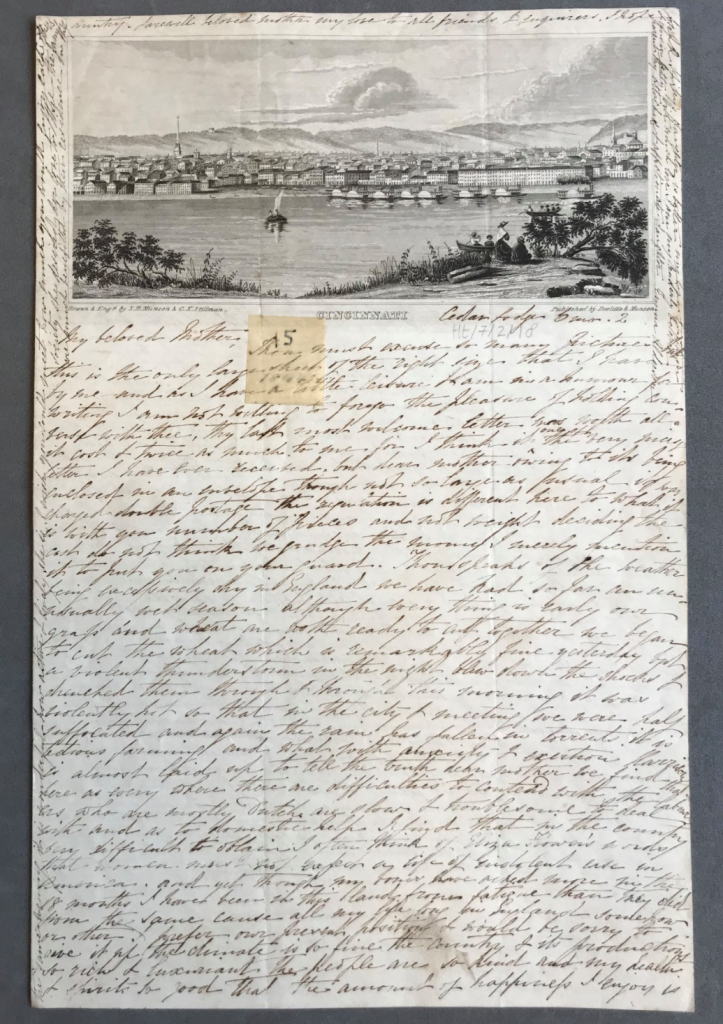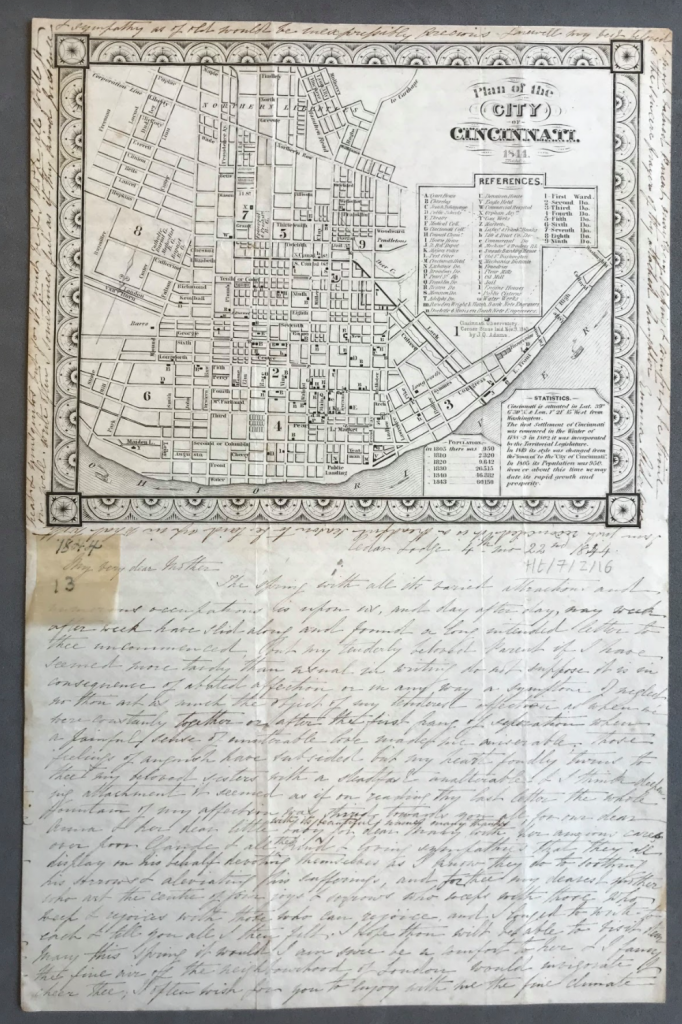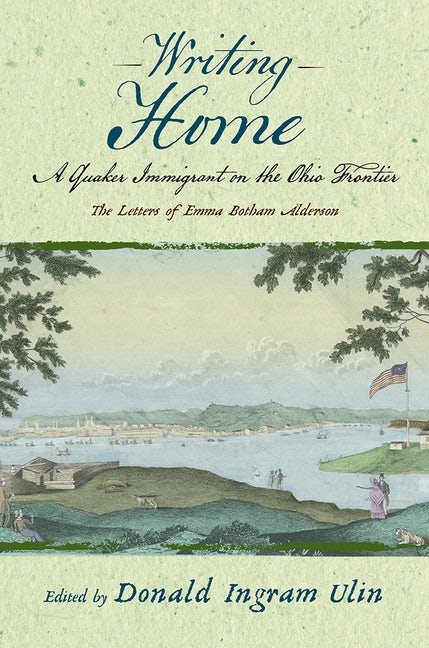The following excepts are from Donald Ulin’s new book Writing Home: A Quaker Immigrant on the Ohio Frontier, which offers readers a firsthand account of the life of Quaker immigrant Emma Alderson through her own letters.
From the introduction…
“On September 17, 1842, a Quaker family of seven stepped off the Shenandoah at Philadelphia, having left Liverpool six weeks earlier. Emma Botham Alderson, age thirty-six, had grown up in the village of Uttoxeter, in the Midlands county of Staffordshire, the daughter of a land surveyor and the youngest of three sisters. Having lived under the shadow of her sister Mary Howitt, one of the day’s most popular writers, Alderson was finally setting off to make a new life of her own. Her husband, Harrison Alderson, age forty-two, had been born to a farming family in Yorkshire but, like so many other farmers’ sons, had left the countryside to find work in the city. After an apprenticeship to a grocer and a few years in the tea trade, he had met Emma. Together they had returned briefly to farming before making the momentous decision to seek a new life in North America… ”

From Alderson’s letters…
“The woods both in Ohio & Kentucky are, however, very beautiful; the remaining greens were intermingled with every variety of yellow, orange, red, brown and occasionally a purple oak with here and there the trunk & arms, \wreathed with the Virginia creeper/, of some dead tree starting up like great scarlet sticks in the very thickest of the forest. The hills, where divested of wood, are of the brightest emerald green, & the river, with its now full and rapid stream, forms a scene of such varied & glorious beauty that I often long you, our beloved friends, could witness it. The houses & villas that are built near the river both in Kentucky & Ohio are all white and enliven and increase the natural beauty of the scenery…”
“I hope, dearest mother, there is no need for alarm on the ground of war between England & America. It is now confidently reported that the Oregon question is settled by partition of the territory. I hope it is, but I do believe there is great disinclination to war in the body of the people here. All know & acknowledge the impolicy of it, & as far as we can judge, it is little worth contending for, with immense tracts of excellent land still uncultivated. What have the Americans to do in seeking to add to their already over large country by the seizing of such distant & unremarkable lands, & England, I am sure, has more dominions than have done her good long ago, but war with this country & Mexico is said to be inevitable. The annexation of Texas was an evil thing because it was intended thereby to strengthen & perpetuate slavery & these are its early bad fruits: war & bloodshed…”

“A few weeks ago I was invited to join a party at the house of a lady in the country. It was the meeting of an anti slavery sewing society & to me a very interesting occasion. Their object is to provide clothing for poor runaway slaves, who often lurk about in the woods & through the country & are frequently discovered by their abject & miserable appearance. Of course this is composed of the red hot stigmatized abolitionists & a thing little known amongst Friends [Quakers] but and a very questionable affair altogether, but I am perverse enough to have rather a peculiar pleasure in their society & to give a decided preference in my own mind to their proceedings. They told me with a kind of triumph of the arrival of two bands of runaways from Kentucky within the last few weeks, \each/ consisting of upwards of 20 persons. One gentleman lost 11 slaves & these were aided in their effort for liberty, clothed & helped forward on their northward route by the good abolitionists of Cincinnati…”

Along with transcriptions and images of Emma Alderson’s letters, Writing Home includes introductions and notes that situate the letters in relation to their critical, biographical, literary, and historical contexts. Editor Donald Ulin discusses the relationship between Alderson’s letters and her sister Mary Howitt’s Our Cousins in Ohio (1849), a remarkable instance of transatlantic literary collaboration.
To learn more about Emma Alderson and how Donald Ulin accomplished this incredible project, check out our recent author interview or a copy of Writing Home.